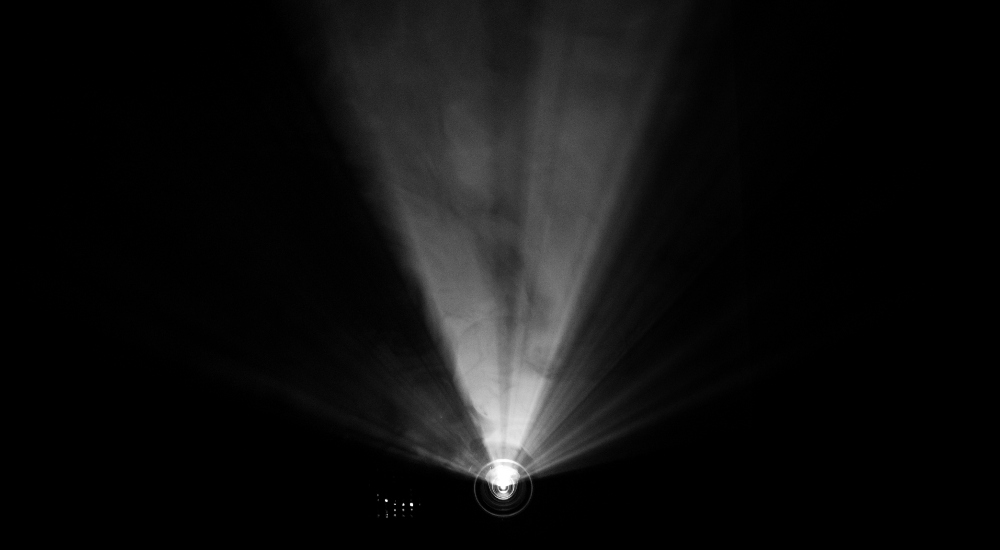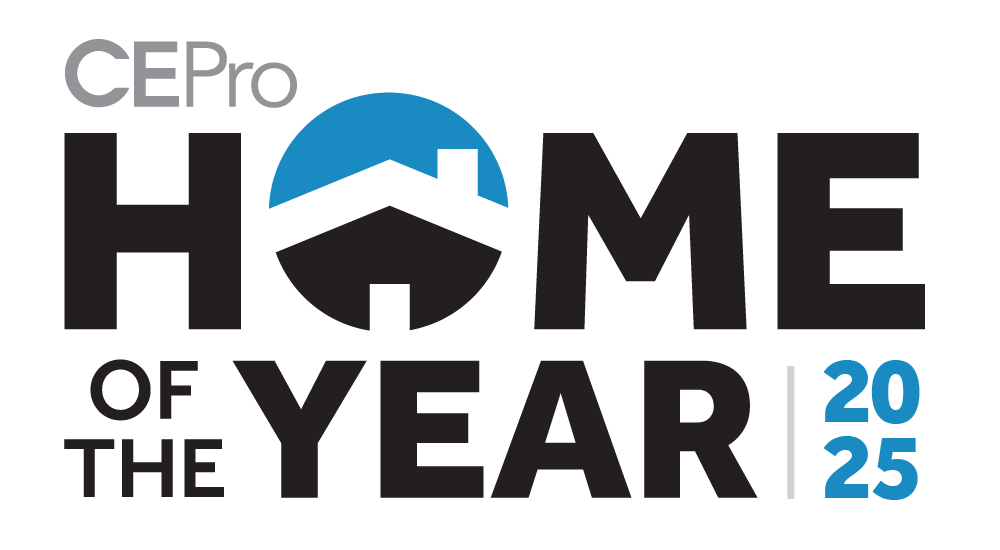“Go big or go home” is never more perfectly pontificated than during rousing home theater discussions. Having recently adopted this mantra, flat-panel display manufacturers introduced televisions at the 2024 CES nearly as tall as a giraffe. Industry “luminaries” say these TV technologies are writing the obituary for video projectors. Such self-anointed soothsaying begs for a twist on Mark Twain’s misquotation: “The rumors of projected video’s demise are greatly exaggerated.”
Home theater’s roots have always had a symbiotic connection with the local movie palace: a larger-than-life image projected onto a screen. So, in the debate of whether to use a TV or a projector as the centerpiece of of a home theater, I have a few questions to ask you.
Does your company demonstrate, design, and install home cinema, and is it referred to in your market as the home theater expert? Or has the romance distilled into merely removing a big TV from an even bigger box, hopefully collecting labor for mounting and not simply placing it on a stand the clients purchased at IKEA?
If larger flatscreen TVs have cast your company far adrift of home theater specialists and into the murky waters of TV installers, you are politely requested to continue reading.
Remembering Home Theater’s Origins
Futurists like Ray Kurzweil, Alvin Toffler and Faith Popcorn have offered forward-looking prognostications that have often interleaved with consumer electronics trends and those more broad to the electronics industry.
Faith Popcorn, reflecting on civil unrest in early career writings, narrowed in on families nesting at home together, coining the term “Cocooning” in 1992 and ostensibly foreshadowing the evolution of Home Theater. However, the perspective of her premonition was not about the products required to assemble a home theater.
Popcorn envisioned families creating social and physical infrastructures for jointly gathering at home, designed to entice teens and younger children to invite friends for visits rather than chance potential issues at public venues. Parents found solitude in having children primarily entertaining at home, under a watchful eye.
During this period, circa the late 80s through the early clutches of the subprime mortgage crisis beginning in 2007, video displays of every type had grown appreciably in viewable size. Projector manufacturers’ adaptation of professional large venue display technologies paved the way for affordable projectors to emerge in the home theater market, such as Digital Light Processing, Liquid Crystal Display, Hughes/JVC D-ILA, and Sony SXRD.
While a terrifying thought for theater chains, the concept of bringing the cinema into the home created neighborhood “events” instead of merely watching TV. The debut and ongoing improvement of game consoles, with large-as-life theater-like action and enveloping sound (for the time), contributed to home tethering.
It might be said that society today is not all that dissimilar from when The Popcorn Report was first published. Principals in integration firms may wish to pick up the still-available book; looking at what was correctly forecasted and missed can make for interesting reading.
Popcorn, alive, vibrant, and still working, continues to espouse the concept of cocooning. Today’s integrators may find that glancing at the past might kindle a head start into the future. CEDIA’s Integrator of 2027 white paper explores the shift from a product-centric emphasis to a human-centric one. The home theater leverages the concept of family-centrism, which might be a preferred antidote to family members sequestering individually and a compelling sales proposition once again.
The Issue with Using Big, Cheap TVs
Today, entry-level 98-inch flatscreen TVs are available at the local warehouse club for less than $1,500, including sales tax, making them drastically cheaper than many high-level projectors. They are strategically positioned and unavoidably visible to all who enter, their siren song disguised as the audio track to the sports highlight clip on perpetual repeat, seductively serenading many a man’s wallet. While displays of this type have an appropriate audience, they are not without inherent drawbacks.
Limited Dynamic Range
Manufacturers of mammoth flatscreen televisions producing a market-entry budget model will consider every compromise fathomable down to the sub-atomic level to meet their intended price objective. Economically forced concessions commonly include insufficient local dimming zones, which create blooming around bright objects and subtitles in scenes with reduced lighting or black backgrounds. One byproduct of backlight reduction is aggressively elevated black levels that squash dynamic range, often resulting in visible background noise.
Narrow Viewing Angles
Off-axis viewing with LCD televisions affects perceived contrast and color consistency across the screen. Aside from a very narrow, center screen, perpendicular “sweet spot,” a phenomenon called geometric metamerism affects all LCD TVs to a varying degree as well. The narrow viewing angle can then acutely penalize televisions over 100 inches diagonal, particularly entry-level models.
Viewed from directly at the center, the image may first appear impressive. However, as viewing positions change in an arc to either side of the center, say an angle of 45 degrees, the contrast ratio can plummet discernably to as much as half, with a perceptible decrease in brightness (light output). From angles as diminutive as 15 degrees off-axis, image fidelity begins to succumb to color shifting and washout, deteriorating exponentially as the viewing position moves laterally from the center.
Flickering
Pulse-width modulation (PWM) dimming, which rapidly switches LEDs on and off, is commonly used to reduce manufacturing costs. The practice results in backlight flickering that varies in intensity depending on the picture mode. Sensitive viewers may perceive flashing or strobe-like effects, with fast-moving objects seeming to blur. Already a candidate for uniformity issues due to fewer backlight zones, PWM often fluctuates certain areas of the image unevenly, creating an unnatural look.
Distracting Reflections
Entry-level TVs of this ilk utilize basic screen technology that is ill-equipped to combat direct and indirect reflections, leaving more expensive step-up models to benefit from newly developed anti-reflective coatings. On and off, the net result is a room-dominating, quasi-mirrorlike surface.
To drive the point home, the Imaging Science Foundation (ISF) categorizes many of those who purchase these TVs as casual observers who cite image size and price as their primary purchase criteria. They freely concede technological oblivion to aspects of picture fidelity that are critically important to those the ISF refers to as careful observers.
Careful observers are notably knowledgeable enthusiasts with an ongoing interest in display device developments. They can assess shortcomings like picture fidelity limitations, build quality and performance trade-offs, and software interface usability issues. Their video systems are deftly ISF-calibrated to precisely nuance every ounce of detail available in the content.
So I Just Need to Buy a Higher Quality TV, Right?
Higher-technology 98-inch up to 115-inch LCD models can creep into the $20,000 range, with OLED’s biggest, 97 inches, at $25,000. A 98-inch 8K Q-LED sells for one penny under $40,000. Nominally, pricing for better than entry-level performance seems to begin around $5,000, with Quantum Dot Mini-LED models pivoting around $10,000.
While more money brings improved performance, as with OLED’s overall superiority in flatscreens, it cannot eliminate all the shortcomings that LCD-based mega-large flatscreens encounter.
Flatscreen TV margins continue to erode for the big three TV manufacturers as they nervously peer over their shoulders at their most recent rivals, who appear to be keeping the cash register busy since entering the retail space. The integration community isn’t faring much better, as flatscreen prices perpetually vacillate, often wavering between the time a project is signed and its completion. Flatscreen TVs are ideal for most rooms throughout a home; however, does the main viewing area deserve more consideration?
DVLED walls are garnering attention with the performance exhibited by top manufacturers, from a suitable distance, at a comparative level to the best offered by other technologies. Still, hurdles exist.
Tile outlines may be visible from too close, off-axis, when out of alignment, or if not precisely flush. Elements in content can also accentuate tile boundaries. Off-axis color shift is detectable, with some low-cost makers struggling with tile-to-tile color consistency. Anomalies have also arisen where computer-assigned color temperatures for the LED display do not match color check readings made directly from the display with spectrophotometers. There are also flickering challenges similar to those exhibited by LCD flat panels utilizing LED backlighting when some DVLEDs are viewed directly.
Additionally, while the category is attaining residential traction, a DVLED wall for home video is still tantamount to purchasing, if ever a possibility, a Formula 1 car for grocery store visits. Performance? World-class. Practical? By no means.
For this article, it is best said that pricing will ease in time as additional companies enter the DVLED space. As for becoming a viable category for mainstream enthusiast consumers, DVLED remains the flat-panel technology of the far-forward future.
Why Did We Think TVs Would Overtake Projectors?
Many integrators have concluded that the residential CI channel has reached a tipping point, as flatscreen TV size eclipsed the long-held standard of the 110-inch diagonal benchmark for home theater projector screens. But a moment’s pause to rethink this more in-depth is warranted.
Initially, 110 diagonal inches was the long-held threshold for CRT-based front projection. Larger screens, even for Cadillac-priced 9” tube projectors, resulted in dimmer images due to insufficient light output. Over time, as CRT projectors were replaced with superseding projection technologies, screens were updated with improved materials that sustained the higher resolutions newer projectors were capable of, with some formulations augmenting projector light output by warding off ambient light. Still, sizes were locked in due to the initial design constraints of the rooms.
One hundred ten inches remained the default size for decades. Even as projector pricing became competitive with elite TV designs and basements became home theater spots for cocooning families, ceiling heights often limited screen size.
Today, as that generation of projectors, often lamp-based models, is due for a refresh, consumers are considering TVs as an alternative for the first time, and many integrators are encouraging them. End-users point to frequent and costly lamp replacements, especially from heavy use, as reasons to avoid continuing with projection.
Integrators have plenty of flatscreen TVs as options, but are they overlooking opportunities to acquaint clients with the advantages the newest technologies projectors have on offer? These include energy-efficient, maintenance-free, long-lifespan laser light engines, high light output, Next-gen resolving optics, and calibration-perfect color reproduction. Indeed, if a client has decided to switch to a flatscreen TV, those needs should professionally be accommodated.
The abovementioned warehouse club model is consciously market-positioned as an appetite-whetting price attention-getter. Integrators can point to the disadvantages described above for entry-level models to illustrate the price chasm between direct-view technologies. This also presents an opportunity to point out how the new era of laser projectors, long-throw and Ultra-Short Throw (UST), effectively eliminates past irritations.
In the Debate of Projector vs. TV in Home Theaters, It Isn’t Even Close
Despite predictions that larger one-piece displays will replace projected video, projectors with long, medium, or short throws remain the most viable technologies for making impressively large images at consumer-friendly prices.
Projector options abound for residential spaces centered around 110-inch diagonal screens and larger.
Traditional long-throw projectors have undergone a renaissance since the implementation of laser light sources. Laser-based machines consume 30 or more percent less energy than previous, performance-equivalent, lamp-based projector designs, and radiated waste heat output is curtailed by as much as 50 percent to reduce thermal stress on internal components.
Solid-state laser light engines are innately more consolidated than lamp-based light sources yet capable of substantially higher brightness. Many are compatible with HDR10 and Dolby Vision. Their inherently diminished heat outlay and innovative fan-assisted convection techniques to channel cooling airflow silently contribute to projector longevity and placement options while decreasing projector size.
Generationally smaller chassis footprints are far less room intrusive for home theater laser projectors with residential-friendly screen sizes (compared to large-venue machines adapted for luxury high-end residential use and near commercial theater-sized screens, aka The Beverly Hills Circuit).
Mainstream home theater projectors have also evolved into compact-sized, installation and automation-friendly devices. Integrators who have adopted the concept that home theater does not mean “home TV” have honed their expertise into expertly pairing new low-profile projectors with screen materials appropriate for their intended viewing environments to create engaging cinematic experiences that thrill clients.
Family rooms and basements prove ideal space for accommodating two-piece projection without significant modifications to existing spaces while eliminating the viewing angle, color shift, and flicker problems of large-screen flat-panel LCD.
Someone once said, “You can put a TV into a home theater, but you can’t put a home theater into a TV.” Timeless as President Kennedy’s “We Choose to Go to the Moon”? Nowhere close. Still, for those who love movies on the big screen…it holds its own. Play your part to reinvigorate home theater in 2025.
Michael Hamilton is a Technical Writer for AVPro and an ISF Co-Instructor for the ISF Workshop AVPro sponsors at their St. Petersburg, FL Technical Support Facility. A calibrator since 1995, Michael is also a product reviewer for the Sound&Vision Webzine video, and before joining AVPro, spent several years calibrating in Hollywood studios and post-production facilities for David Abrams at Avical.







